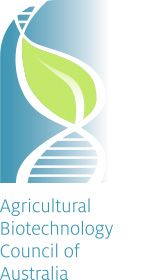4 May 2015. Source: National Geographic http://news.nationalgeographic.com/2015/05/150502-nginnovators-rice-genetic-engineering-gm-organic-farming-pamela-ronald/
Can This Scientist Unite Genetic Engineers and Organic Farmers?
DAVIS, California—Eighteen scientists are sitting in a lab, talking about new ways to feed the planet. These are some of the world’s foremost experts on rice. Most of them are from China. Nearly all of them are men.
But it’s an American woman—tan and fit at 54, with gray-brown hair and bright green eyes—who clearly runs the show. Her name is Pamela Ronald, and this is, after all, her laboratory.
Ronald is a plant pathologist and geneticist—a professor at the University of California, Davis whose lab has isolated genes from rice that can resist diseases and tolerate floods. When those genes are inserted into existing rice plants, they help farmers grow high-yield harvests in places where the crop is a vulnerable staple. Last year, four million subsistence farmers in seven countries fed millions of people by planting seeds that carry a gene Ronald and her collaborators isolated.
But her innovations aren’t limited to science. She’s also trying to mend the perceived schism between genetic engineering and organic farming. To do so, she’s promoting a form of sustainable agriculture that draws on both practices. Only by combining elements of each, she contends, will we have a chance of feeding the world’s swelling population (expected to reach 9.2 billion by 2050) while also protecting the planet’s natural resources and countenancing the effects of climate change.
Last year, four million subsistence farmers in seven countries fed millions of people by planting seeds that carry a gene Pamela Ronald and her collaborators isolated.
It seems like a radical idea: There may be no more polarizing ideological debate today than the one over transgenic crops. Though there’s no meaningful scientific definition of “genetic modification” (GM)—virtually all the food we eat has been genetically improved in some manner—most critiques center on moving genes from one organism to another in a lab. For years many people around the world have been diametrically, often bitterly, opposed to this type of genetic engineering. (At least when it comes to crops. For whatever reason, few people seem to have a problem with insulin or other lifesaving GM medicines.)
But as Ronald sees it, plant geneticists and organic farmers aren’t enemies. In fact, they can be bedfellows: Her husband, Raoul Adamchak, is an organic farmer and co-author, with Ronald, of Tomorrow’s Table: Organic Farming, Genetics, and the Future of Food. Praised by Bill Gates and Michael Pollan, their book argues for an integrated theory of agriculture in which “organic farming and genetic engineering each will play an increasingly important role,” rather than being unnecessarily pitted against each other.
“All this arguing about what’s genetically modified is a big distraction from the really important goals,” says Ronald. “We need to produce safe and nutritious food that consumers can afford and farmers can make a profit from. And we need agricultural practices that enhance soil fertility and crop biodiversity, use land and water efficiently, reduce use of toxic compounds, reduce erosion, and sequester carbon. I think most everyone agrees on those general principles.”…

